In 2006 adult smokers spent just over £13bn on cigarettes, cigars, RYO tobacco, lighters and other accessories - and a lot of that money went through forecourt tills. Cigarettes is, of course, by far the biggest part of the market - worth £11.34bn in retail sales. And forecourts take an 11.8% share of those sales. Iain Watkins, trade communications manager at Imperial Tobacco, comments: "The number of forecourts is in decline yet they still account for one in every eight packs of cigarettes sold. That’s pretty impressive."
Jeremy Blackburn, Gallaher’s group trade communications manager, likens the tobacco market to petrol: "The tobacco category does drive footfall so there is profit to be made. People come in and buy 20 cigarettes plus some confectionery or a soft drink or a snack. Tobacco is like petrol - the margins are low but it brings people in."
The best-selling cigarette brand in the country is Lambert & Butler (L&B) King Size with a 12.8% share of sales. Imperial’s Watkins is proud of the brand’s success: "Sales of L&B grew again last year. Total sales were worth £1.7bn, which makes it the top fmcg brand and nearly twice the size of Coca-Cola."
And in forecourts L&B King Size is number one too, in fact it over-trades, with a 15.2% share of sales.
Mayfair is the number two ciggie in the UK with a 7% share of sales but in forecourts it only manages the number four position with a 7.7% share.
Number two in forecourts is premium brand Marlboro Gold King Size with a 10.7% share of sales. Again forecourts over-trade in this brand as across all trading sectors it is only number four with 5.7% of sales.
The third best- selling cigarette in the country is Benson & Hedges King Size and in forecourts it too is number three, with a 9.8% share of sales.
Price is obviously a key issue in the cigarette market and Imperial, along with data provider RAL, divide the category into five price bands: premium (B&H, Marlboro); mid (Superkings, Berkeley); standard (L&B, B&H Silver); value (Mayfair, Richmond); and economy (Sterling, Windsor Blue).
Across the UK, value cigarettes take the lion’s share of sales - 33.9%; followed by premium with 28%; standard with 21.9%; economy with 8.2%; and mid with 8%. However forecourts are once again different, with premium cigarettes accounting for most sales (38.5%) followed by value (28.5%) standard (26.7%), mid (5.1%) and economy (1.2%).
RAL and Imperial estimate that premium sales will fall - across the whole trade and in forecourts. In forecourts they reckon growth will come from value brands.
Meanwhile the traditionally premium Benson & Hedges brand has crossed the line into value for money territory. It first did this with Silver, and that is now joined by Benson & Hedges Black in a slide pack.
B&H Black is a full-flavour 10mg cigarette, which retails at £4.89. As with B&H Silver, the idea is to give smokers access to the B&H brand at a more affordable price.
Silver also retails at £4.89 while Gold has a rrp of £5.44.
B&H Gold is the third best-selling cigarette brand in forecourt outlets while Silver is the fifth best seller.
Coinciding with the launch of B&H Black, Gallaher has announced that B&H Silver 20s will be available in the slide pack on a permanent basis. Says Blackburn: "B&H Silver has captured the imagination of young adult smokers and has widely been regarded as the brand that is doing something different. The limited-edition slide packs have proven so popular that we have decided to make the format permanent."
However he adds that despite the launch of Silver and now Black, forecourts need to maintain stock levels of B&H Gold for profit purposes, as it’s a best-selling premium line.
== smoother smoke ==
Gallaher is also hoping to strengthen the Silk Cut brand with the launch of its Graphite variant.
The cigarette incorporates an innovative dual carbon filter, which claims to deliver a smooth and satisfying smoke along with an enhanced flavour.
Blackburn comments: "The dual carbon filter is unique to the UK market and complements the existing brand portfolio. Silk Cut Graphite will appeal to young adult smokers seeking a smoother smoke and full flavour, while retailers can take advantage of the fact that Silk Cut is still growing in the premium sector and Silk Cut Graphite will increase the brand’s prominence and share of this market."
Silk Cut Purple King Size is the sixth best-selling cigarette brand through forecourts.
Most cigarettes sales come from 20s packs - 73% to be precise in forecourts. A further 25% come from 10s. But 10s packs are under threat as doctors are calling for a ban "to protect children from tobacco".
Says Watkins: "Tens packs are an integral part of the market, accounting for one in five sales. A lot of adult smokers buy them to limit their expenditure and their consumption.
"A lot of people want them so we don’t think they should banned."
Another new weapon in the war on smoking is grisly pictorial warnings. These will appear on the back of packs - the fronts will remain the same with the large text warnings.
Gallaher’s Blackburn reckons these won’t be seen for some time because manufacturers and retailers need time to sell through older stock.
== It’s the law ==
The pictorial warnings and the ban on 10s packs (if it ever happens) are some time off but what is closer at hand is the ban on smoking in public places. (See panel on previous page.)
But aside from the ban, the next big change for the tobacco market is the increase in the age at which teenagers can buy the products. From October 1, it rises from 16 to 18. Hopefully this won’t be as much as a problem for forecourts as other trade outlets because generally forecourts don’t get as many teenagers as customers as, say, local convenience stores. However as many forecourts have actually become ’the local convenience store’ it will have some effect.
The big concern in the convenience trade is that on September 30, 16- and 17-year-olds can walk into their local shop and purchase a packet of cigarettes, but the very next day, it will be illegal for retailers to sell them to under-18s. There are worries that some teenagers will think this is some rule their local retailer has made up just for the fun of it. The problem lies with the government’s inaction over communicating the law change.
It says it is busy telling people about the smoking in public places ban and doesn’t want to confuse them with the age change. ACS public affairs manager, Shane Brennan, says: "We’re very concerned about this.
"The law is a major change in what consumers are entitled to do but there is a lack of awareness among those consumers. What we’d like to see is the government focusing on communicating to young people through relevant print media, radio and TV.
"We’d also like to hear government ministers talking about this."
Brennan recognises that the long-term implications of the age change could be positive - having the age for cigarettes and alcohol the same will make it easier for retailers. But he says: "Feedback we’re getting from retailers at the moment is that they’re very concerned because there’s not enough awareness.
"Retailers need to talk to their customers," he advises, "and they need to put up posters in stores."
Brandon Cook, lead officer for age-restricted sales at the Trading Standards Institute (TSI) agrees: "I’d advise retailers to start communicating now with their younger customers - to build a relationship and say ’you’re 16 or 17 now and I can sell you cigarettes, but come October 1 I won’t be able to do so’. I’d also advise retailers to adopt the Challenge 21 or No ID No Sale policy in their stores.
"The TSI was one of the bodies that pressed for the age change for two reasons - to benefit young people’s health and also to help retailers by having 18 as the standard for age-restricted purchases. We’re striving to advise retailers about the change before the legislation comes into force."
Imperial’s Watkins says his company is involved with Citizencard’s No ID, No Sale and he encourages retailers to go to their forums to learn how to refuse sales.
As if the age change was not enough for retailers to cope with, there’s also media talk of a licensing system for cigarettes similar to tobacco. This has been suggested by the British Medical Association. However, the Department of Health confirms that the government favours a negative licensing system but a spokesman says this would require separate legislation. Any plans for such legislation could not be heard until the autumn and then it would be a year before it appeared on the statute books.
Penalties under the proposed negative licensing are harsh - retailers could be banned from selling tobacco for up to a year. Three instances of selling tobacco to minors would need to be proved within a three-year period before such a prohibition order could be sought. But the government wants such orders to apply to the shop where the offence occurred and to the manager of the premises.
ACS chief executive, James Lowman, is against the proposals because he believes existing penalties are not being used effectively. He says the maximum fine for retailers who are caught selling cigarettes to the under-aged is £2,500 but the average fine awarded is only a few hundred pounds. His colleague, Shane Brennan, adds: "The real issues regarding negative licensing are the technicalities - a ban of up to one year is a massive penalty. Then there are the three offences in three years - three years is a very long time in retailing. And what happens with enforcement post-ban? The ban covers the premises and the person but what happens if the premises are sold and who is going to keep tabs on the person if they leave? These are all big concerns."
== Rolling on ==
Away from legalities, and there are other product categories to consider, not least of all the roll-your-own (RYO) tobacco sector.
Last year RYO smokers spent £683m on tobacco, up 10% on 2005. Forecourts account for nearly 11% of these sales. The best-selling brand by far is Golden Virginia, which accounts for well over half of all RYO tobacco sold through forecourts and is worth £44.4m to the sector. Number two brand is Amber Leaf, which accounts for 16% of sales through forecourts. However latest figures from Gallaher (RAL year to date March 07) put the brand’s share at just over 18%.
But it now has extra competition as Imperial has launched Gold Leaf, which it says offers retailers excellent on-going margins.
Gold Leaf is being launched into the buoyant lower-price RYO sector, which has experienced 175% growth since 2000.
Available now, it comes in 11.5g and 23g packs. Recommend retail prices are £2.35 and £4.65 respectively, and pricemarked packs are available for retailers who prefer this option.
The good new for smokers is that Gold Leaf packs also contain Gold Leaf rolling papers and so provide an all-in-one RYO solution. Obviously this is nothing new as Amber Leaf does this already, but it all adds to the offer.
Finally on RYO, Gallaher’s Blackburn reckons forecourts could profit from stocking larger packs of tobacco. "Distribution of 12.5g packs is very good," he says, "But there is an opportunity for forecourts to extend their RYO range to include the larger 25g and 50g packs. There’s a common misconception that these packs are just for the grocery multiples but they’re not."
== Accessorise ==
Smoker’s accessories have always been the big profit earners in the category. However the big news here is another law, this time banning the sale of non-child-resistant lighters. A child-resistant lighter has a more complex ignition process to prevent young children from operating them. Retailers have until March 11, 2008 to sell through any non-compliant stock.
Swedish Match says that all three of its lighter brands - Swan, Cricket and Poppell - now have child-resistant mechanisms.
Andrew Hardie, marketing manager at the company, comments: "The new legislation should make it more difficult to sell lighters which aren’t child resistant. Our continuing message to consumers is that while child-resistant devices are not child ’proof’ and certainly not a substitute for adequate adult supervision, this new legislation is absolutely the right step in helping to prevent child fatalities, serious injuries and damage to property."
Source throughout: Imperial Tobacco’s category overview, using RAL data unless otherwise stated.
----
=== Top 10 cigarettes in forecourts ===
1. Lambert & Butler King Size
2. Marlboro Gold King Size
3. Benson & Hedges Gold King Size
4. Mayfair King Size
5. Benson & Hedges Silver King Size
6. Silk Cut Purple King Size
7. Richmond King Size
8. Richmond Superkings
9. Royals King Size Red
10. Embassy Number 1
Source: Imperial Tobacco/RAL
----
=== smoking ban comes to england on July 1 ===
From July 1 it will be against the law to smoke in virtually all enclosed and substantially enclosed public places and workplaces in England. It follows the ban in Scotland more than a year ago; Wales from April 2; and Northern Ireland from April 30.
Forecourt retailers are understandably concerned about the effect on tobacco sales, one of the major selling categories in their stores.
However, sales data from the Republic of Ireland - where a public smoking ban has been in force for three years - should put retailers’ minds at rest. According to Deirdre Healy, Imperial Tobacco’s corporate affairs manager based at the company’s office in Dublin, tobacco sales as a whole were up 0.2% last year, with Imperial Tobacco’s sales up 3.2%.
In fact the incidence of smoking overall has declined on average by just 0.5 sticks a day per smoker. And forecourts, she claims, have been one of the main channels to benefit from the ban: "Ultimately the smoking ban has not changed people’s smoking habits - it’s just changed where they smoke. People have adapted to the new law, with more people smoking/entertaining at home. Smokers are resilient to change and have accepted the change as their new way of life.
"Forecourts have done well because the car is one of the few places people can still smoke outside the home. After all, they can’t smoke at work or in the pub - so they don’t buy their cigarettes there either. They’re more likely to purchase their cigarettes from a forecourt on their way to or from work - particularly if they’re going to be stuck in traffic - or on their way out for the evening.
"The fact that more people are popping into the forecourt to buy cigarettes has also had a positive effect on sales from other categories - such as snacks and food to go."
Healy says sales have taken a similar pattern in the various countries where a smoking ban has come into force, with consumption dropping initially, but recovering after a period of time.
"In Scotland sales initially fell by around 8%," says Healy. "But the average Scottish smoker consumes nearly as many cigarettes a day now as they did a year ago.
"Meanwhile sales of 10s packs saw an initial increase after the ban, but have settled down to their original volume, whereas 40s have risen in volume consistently against the pre-ban average.
"Value and economy brands have also seen periods of growth compared with the pre-ban average."
Healy recommends retailers in a smoking-ban environment should stock up on different pack formats - 10s, 20s and multipacks in cigarettes, and 12.5g and 25g packs in tobacco - to cater for the changing customer needs. "They should also look at other store categories such as beers, wines and spirits, and bagged snacks, because that is where retailers will pick up on sales," she says.
Meanwhile Matt Szclest, manager of the Maxol site in Walkinstown Avenue in Dublin, says the smoking ban had had no effect on tobacco sales.
----
=== Case study: Jet, Ashford ===
Lucy and Roberto Di Duca run a Jet forecourt in the Willesborough area of Ashford, Kent. It’s on a busy main road out of the town and close to two secondary schools so gets both passing and walk-on trade.
The couple were surprised to hear that Lambert & Butler King Size is the biggest seller in forecourts because in their experience it’s Mayfair. Says Roberto: "Mayfair sales are through the roof. We get through 10 or 12 outers a week whereas we struggle to sell two outers of Lambert & Butler."
He says Golden Virginia is very popular but cigars don’t really sell. "We’ve one regular who buys Hamlet 10s but apart from that they don’t go very well except at Christmas."
They get lots of schoolkids in the shop and always ask them for photo ID. Says Lucy: "To be honest we don’t get any problems with the schoolchildren trying to buy cigarettes; it’s other youngsters on a Friday night. But even then we’ve never had any major problems. We don’t accept photocopies of documents or provisional driving licences as ID, we only accept things like Citizencard or actual passports. We’ve never had abuse from youths who we’ve refused to serve; they’re usually too embarrassed at having been turned away in front of their friends." The couple aren’t too concerned about the age change for buying cigarettes. "We’ll just make it a rule, if you’re in school uniform you won’t get served - full stop. And we’ll carry on asking for ID," says Roberto.



















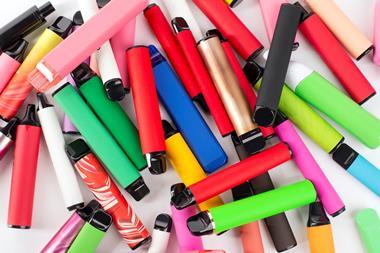
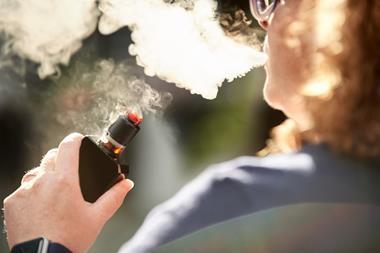
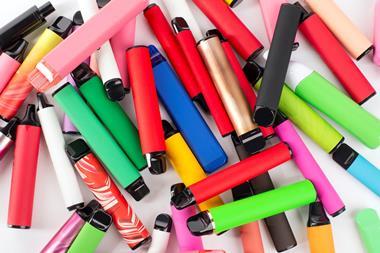
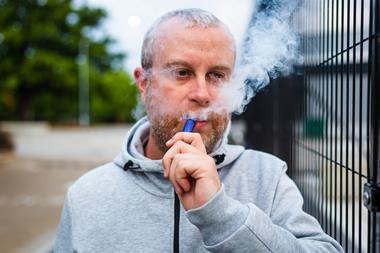


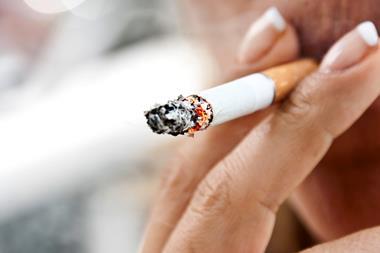



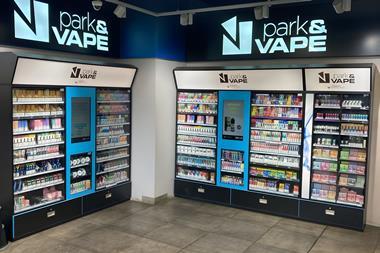
No comments yet